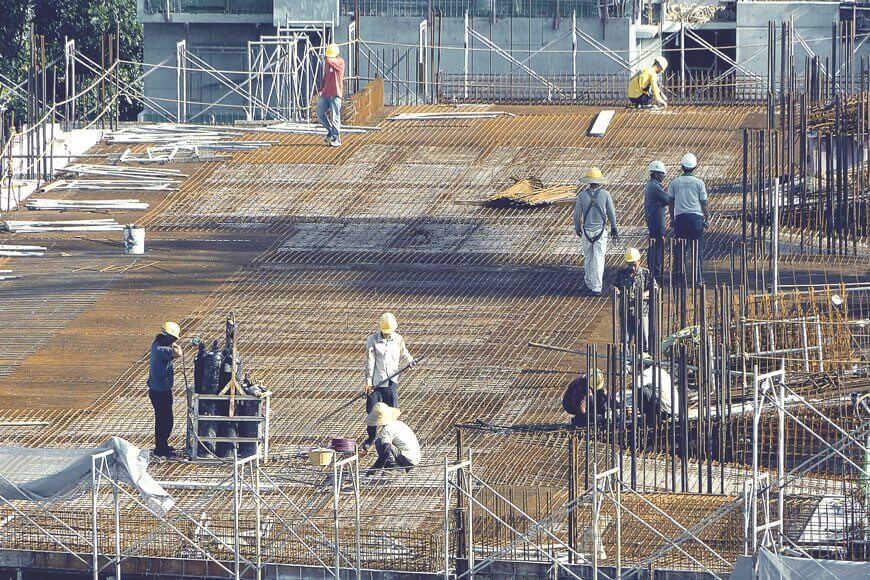There has been much talk about big data in recent years. Various organizations have changed their business model in order to effectively utilize big data tech. Similarly, various new players have realized the advantages of big data and have created new business models that benefit from it.

What is big data?
So what is the story behind big data? Billions and billions of years ago (or more like a decade) mankind was faced with a problem. There was too much data in the world and technology was progressing at an unbelievable pace. The world was generating floods of data on a regular basis which kept on accumulating. In short, we had a surplus amount of data in our hands but no good tools and algorithms to process it.
Read also: 4D BIM: Five ways it can transform your project
So big data, as the name implies, is the use of large amounts of data that can be analysed and implemented in a meaningful way. Now that we have algorithms and tools at our disposal, we use these huge bits of information (Big Data) to improve on various things. Let’s take a moment to look at what is it being used for.
What is it used for? Without further ado, here are three fundamental uses of Big Data in today’s world:
Predicting Market Trends
One of the most fundamental uses of big data has been the improved ability to predict market trends. Predictive Analytics has taken a turn for the better as large quantities of data provide a better estimation. According to Predictive Analytics Today various tools such as SAS are being extensively used in order to effectively forecast markets.
Understanding customer preferences
We all know the rule about knowing your customers. Big data has made knowing your customers a much easier task.
Processing of data yields insights into the minds of the consumers. We can identify what they prefer, what they avoid and what they need. Any and all kinds of feedback is easily converted into valuable insights.
Optimising business processes
One cannot say enough about business optimization and waste management. It is a need in every business to create optimized work processes in every task, and thereby reduce waste. Big data allows organizations to improve their work processes by keeping track of records, perform data analysis, and implement improvements.
In an article, World Oil elaborates on cost reduction due to the implementation of big data technologies. Various companies in the oil, gas and construction industry can hugely benefit from these changes.
The effective use of digital technologies can reduce cost expenditures to up to 20% and cut upstream by 3-5%
How to use big data in construction
Big data has entered construction and it’s here to stay. In the course of the last years, the building sector has made significant progress in regard to big data tech. The following are the main ways in which big data has helped the industry so far:
Keep track of time and better management
Organisations can monitor time and avoid delays with project management software that processes data in real time. This has allowed various contractors and construction managers to better monitor production and stick to schedules. According to an article by MarTech, 60% of each workday, data managers spend on finding and managing data.
Check out also: 5D BIM- How It Will Help The Construction Industry
Geo-location services have allowed workers to keep track of machinery and monitor the usage of available resources. This can then be used to identify work processes and reduce waste. These changes may seem small and insignificant but these factors on a collective level have a huge impact on resources, budget and cost. In short, big data can provide construction with the opportunity to remove a decades-long image of a slow industry replace it with efficiency.
Accurate budget estimates
With knowledge comes the ability of better planning. With better planning comes the possibility of improved budget estimates and a superior understanding of costs and timelines.
More data analysed leads to more insights that can be very valuable for contractors and managers. Hence, big data is creating powerful managers that are using the tools at their disposal very skillfully.
Lower project risks
In construction nothing is predictable. Most of the managers and contractors may have to deal with bad quality materials, tough weather conditions and mishaps of any kind. This is where simulation comes to play. With more data, better variables and scenarios can be created on simulation tools which can eventually reduce project risks.
More insights, no matter how small, can have a rippling effect and bring changes that can truly make a big difference. These differences and insights from the right data type can lead to lower project risks.
Make the right choice
If you combine big data tools with the right qualified people you can bring more insight to the projects. Ultimately leading to a more information-driven decision with regards to construction. Managers then have the advantage of making the right call with the right type of information at hand.
According to Forbes, construction is an industry where 35% of the costs are accounted for by remedial work and material waste.
One of the most significant changes in the construction industry has been the development of project management software due to big data tech. With real-time project management software, managers and contractors tend to make decisions faster and inform relevant parties in real time.
Technological change in the construction industry
Once considered an archaic industry, the construction world is going through a rapid shift. Various entities have made it their mission to bring modernisation to this industry. At the moment, technology is driving a shift in order to improve efficiency, lower costs and manage waste. Optimization of each and every work process from communication to development has been evolving the industry as we speak. Let’s look at a few things that have brought about major changes and plan to do more.
From paper blue print to BIM
The traditional method of building design, construction specs and other pesky details have been moved to a modern system called Building Information Modelling (BIM). It’s a much talked about topic and contractors and managers are finding a lot of benefit in BIM tech.
According to NBS, 70% of the participants believe cost reduction in the building/ maintenance of the project will be realized.
On its own BIM tech has also evolved over time from 3D to 4D and to the latest one 5D. Progress such as these benefit construction workers in planning, budgeting and much more.
From in-person meeting to virtual meeting rooms
Big data has crossed location boundaries. Internet and the development of technologies have made it possible to create virtual meeting rooms and ultimately beat geographical limitations. People can work remotely and be updated on projects in real-time. Issues and problems can be fixed as soon as they are identified.
Want to know more? How to know when you need real-time project management software
In construction, off-site construction workers can have meeting with managers without a problem and provide updates. Project management software has paved the way to easy communication without delays.
From chaotic paper-intensive management to project management software
There is a reason why the construction industry has had a reputation of being very slow and late at delivering projects. Managers and construction workers used to follow the traditional paper-intensive management system that created the following problems:
- Communication bottlenecks – Information flow was fragmented and delayed which resulted in project halts and delays.
- Budget overruns that resulted in projects halting midway.
- Awful decision making that resulted in high costs and resource allocation.
- Historical records were a nightmare to go through which decreased efficiency.
It becomes clear, then, that one of the most significant and promising changes in the construction industry has been the arrival of big data that has allowed construction workers to be informed about changes, problems and delays in real-time.
Real-time project management software brings order in an industry that has been in an upheaval for decades.
From one man’s role to collaboration
Previously, there was a single person in charge of all the data and information. The roles and tasks were divided and one person had to go through the data to create insights, to find workflow problems and make decisions. With the arrival of big data tech the tables have turned and now it’s a collaboration. Decisions can be made with insights and contribution from all.
The future of big data in construction
It is clear that the changes made by big data have functioned as a catalyst for change in construction. But more technological developments are yet to come. There will be a time where pen and paper practices will be long forgotten and the construction industry, like the rest of them, will be a modern and moretech-savvyy industry with serious focus on data and digital solutions.
Infographic designed by Vilius Viso




